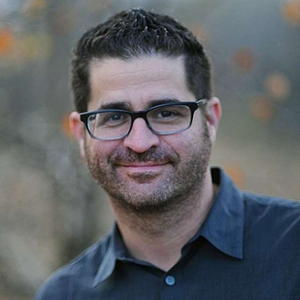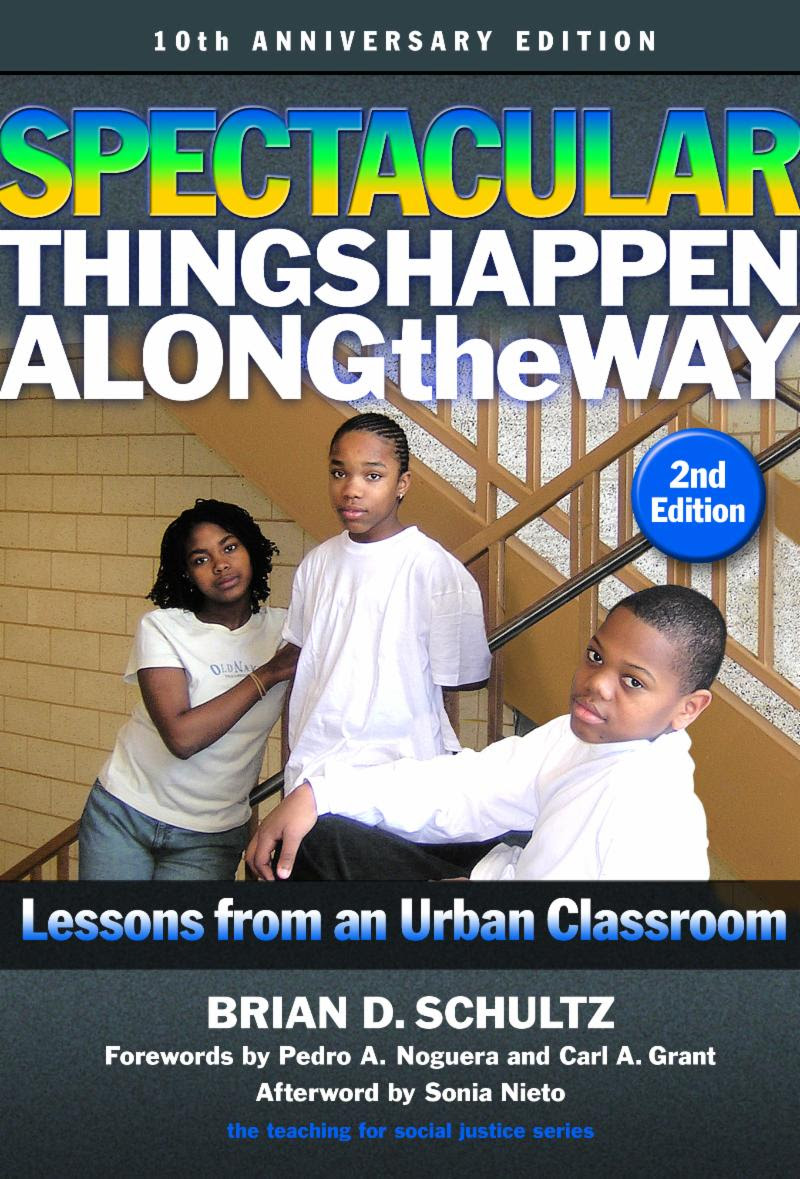How Fifth-Grade Students Became Inspired Citizen Activists

James M. Loy, Miami University
 Dr. Brian Schultz
Dr. Brian Schultz
Back when Brian Schultz was a 5th-grade teacher in a struggling urban school, he asked his students to name a social issue that could inform a class project. But when the students decided what they really needed was a whole new school building, no one could have predicted what came next.
Their efforts soon attracted national attention. The project was featured on the popular public radio program This American Life. And it eventually inspired a book called Spectacular Things Happen Along the Way, which received widespread praise from acclaimed authors, academics, activists, and journalists.
Newly published in a second edition, the book is an exploration of what is possible for teachers and student to achieve. Today, Brian Schultz is a Miami University professor of teacher education, and he recently spoke about this incredible experience, its lasting impact on students, and more.
An extended version of this conversation appears on the Reframe podcast.
Listen to the audio podcast
Read the Story
This is an amazing story about civic engagement, social justice, activism, and student empowerment. So how did it originally begin?
Schultz: The book is about my teaching and learning with students in a school that served a housing project community in downtown Chicago. I was a fifth-grade teacher, and the stories from the book are when I looked to the students to name what problems they wanted to solve in the community. And within an hour, the students came up with almost 100 different topics. But when we looked at the list, about half the issues had to do with the shameful state of their school building. Everything from having no gym, no lunchroom, no auditorium. To bullet holes in the windows, or lights that didn't work, or missing drinking fountains, or disgusting bathrooms.
So the students decided that that was the problem they wanted to focus on. And from that point on, it became the curriculum -- working to put pressure on the city of Chicago and the school board to make good on an erstwhile promise of a new school building for the community. So reading and writing and math and science all became integrated and integral to solving the problem of getting a new school building. And the book chronicles my learning alongside the students.
When you brought this idea to your students, did you ever think it would lead to such a massive issue? And did you receive any pushback from administrators who may have thought that it was an unrealistic or impractical goal?
Schultz: That’s a really great question. I had gone to a professional development seminar on civic education called Project Citizen. And the event really cautioned teachers to start small, start with something local. So when I brought it to my students, I didn't know what to expect. I knew that it was an inspiring professional development seminar for me. I thought, “Wow, this is how I can spark interest and motivate my students to do something as an emergent curriculum that centers on the concerns and questions that they have.” But I didn't know where it would go. Initially, I thought they would have picked something like wanting fruit punch at lunch or recess every day. So when they started naming things that were much bigger and broader social issues, I was super excited. But I was also in unchartered territory.
And I had a really supportive administration and great colleagues. As the curriculum took off, the students’ engagement propelled support well beyond what I might have wanted to do in terms of convincing my principal that this was worthy. The kids did it themselves. They were actively engaged in the learning process well beyond what outsiders would have thought was the expectation of fifth graders in this particular school, at this particular time.
Can you talk about that learning? You write in the book that reading, writing, arithmetic, and social studies all blended together, that it wasn't just textbook learning, but focused on solving real problems. How did that actually unfold?
Schultz: Using the questions the students had about how do we push back on the city to get a new school was one of these authentic curriculum problems. It's really only in school that we separate subject matter, saying, “Oh, it’s 10 o'clock. It's time for math. Put away your reading.” In our daily lives, we're constantly interacting between those disciplines. And that became quite apparent. The curriculum studies literature writes a lot about that confluence of students asking who they are in this world and what's going on in this world. And when those two come together, it’s a natural fit for a classroom curriculum -- albeit not in the normal way that we think about “math time.”
We needed to use mathematics to solve the problem of school funding, for example. [And] oftentimes students were working on different parts of a contingent action plan. So everything from a letter-writing campaign to petitions to researching material. They also made a video documentary and produced a website all centered around the work. Sometimes we used expository writing to document the problems. And we could transition and turn expository writing into persuasive writing and make press releases or persuasive letters to people that we thought could help solve our problem. As the students articulated, it was people with power that could help them make the changes they were demanding.
Did you get a sense for what the students did after they left your class? What they took away from the experience?
Schultz: I maintained contact with a lot of students in the beginning, and it's now a handful of students that I've maintained contact with. I think the most important takeaway is that many of the students walked away with their eyes wider open to issues of justice and equity that play a part in our society.
As I still engage with some of the students, they reflect back on their fifth-grade year with nostalgia, about the power of being able to focus on the things they found most important. At that time, the school building wasn't necessarily just for them. It was for their family, and it was for the other people in the community who would come after them. And I think, for them, that was a really big point in why this was powerful.
It sounds like it built a foundation that they could reflect upon and carry with them going forward.
Schultz: I think so. And that's what some of the new material in the book resonates with. I thread through narratives of some of the former fifth graders who are now in their mid-20s, and how they're contemplating what they did as 11-year-olds. How they're thinking about it now.
There's one story in particular. One of the students ends up having an article written about him in a news magazine. At the time, he was working on the Fight for $15 campaign. He was working at a Walgreens in Chicago and seeing that the minimum wage and safety should be increased. He was campaigning with a community-based organization. And in this news magazine interview, he actually reflects back on his fifth grade year, when he engaged in an organizing effort to get a new school building, about why and how he thinks about this work now in terms of fairness and equity and safety, about how workers should be treated, in this case, in a retail environment.
I reflect on that because that’s a pretty powerful piece, to read about a former student, years later, who's not only speaking out for an issue that is important and relevant to his own life, but that connects back to the engagement he had ten years earlier in a fifth-grade classroom. On some level, it's that sentimental moment that we teachers all long for. But to me, it's a powerful testament to allowing students that space, that opportunity, and then challenging them with the responsibility to engage in learning that is responsive to their own lives. And that's not something that ends at the end of a school year. Those are tools that are transferred to other situations in life. You can learn to take action and transfer skills from one experience to the next.
In the epilogue of the new edition, you talk about pushing back against the stereotypical archetype or that false Hollywood representation of the teacher as being the “hero” or the “savior” for marginalized students. What’s wrong with portraying teachers this way?
Schultz: I think it devalues the humanity of kids, and the capacity of people, particularly, people who've come up in spaces that are historically marginalized, or that have historical disinvestment. Chicago is a prime example in terms of the schooling practices in the neighborhood segregation -- from redlining to blatant disinvestment in an entire community for resources, or for libraries, and things like that. So what happens, when we say that all it takes is one committed person to fix all of these societal ills, is we're playing into the fact that the individuals -- who find themselves being beaten up by the contextual factors that society set up -- could pick themselves up if only they tried harder, or worked harder.
But it's bigger and broader than that. It's not about an individual that is going to, on their own, fix a situation. It's about being in solidarity with the community in which you're serving. For me, it was trying to work with and learn from and an alongside my students and their families. And that wasn't something I necessarily went in trying to do. But I realized quickly that my students had a tremendous amount to teach me. So did their families. And so did the community. So when that “teacher hero” piece plays out, it butts up against that, and that's problematic.
It also doesn't deal with the systemic issues of structural racism, of white supremacy, that's pervasive in our schools and school systems, or the way we fund schools. So we need to get into these broader issues that affect how we're deciding to educate some children and not others. Or who has access to resources and who doesn't? That's part of the bigger picture when we think about the "teacher as hero" or the "white savior" mentality.
I imagine almost every school has their issues that need to be addressed. But can this book, or this project, be an example of what it's possible to accomplish in classrooms today?
I'd say so. But it's an example. It's not a model. It's not the recipe for another space and another time. But it does show us that it is possible, within an environment of this hyper-accountability and high-stakes testing, that looking to students is a practical enterprise, that shows results on all the same outside indicators. But honor the full humanity of the children in the process.
I'm really fascinated with other teachers, or whole schools, who have tried to honor that full humanity of children by allowing space for them to name what's worthwhile as the starting point. So asking, “What are problems that we have?” and, “What are we curious about?” as a starting point for how we think about what happens in the classroom, or in school, writ large.

